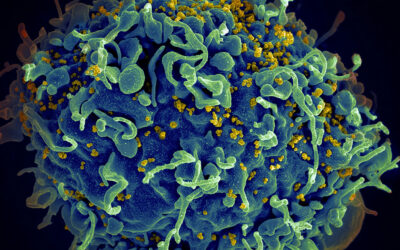Researchers have identified a new antibiotic that is naturally produced bybacteria. The molecule, called lariocidin, has a unique mechanism of action that could make it effective against bacteria that are resistant to other antibiotics in use today.
Continued use of antibiotics can lead bacteria to become resistant, causing over one million deaths across the world every year. New drugs are desperately needed to combat the threat of antibiotic resistance, but no antibiotics with a novel mechanism of action have entered the market for nearly 30 years, and few candidates are under development.
“Our old drugs are becoming less and less effective as bacteria become more and more resistant to them,” said Gerry Wright, professor at McMaster University in Canada and senior author of the study.
What makes lariocidin unique compared to other antibiotics is its shape, which resembles a lasso knot used by cowboys and grants the molecule outstanding strength and stability.
The study showed that the newly found antibiotic is effective against a broad range of bacteria, including those that are drug resistant. It is also not toxic to human cells, making it a promising candidate for the development of a new class of antibiotics.
“This is a new molecule with a new mode of action,” said Wright. “It’s a big leap forward.”
Searching for new antibiotics
Wright and colleagues set out to find unusual microbes that naturally produce antibiotics by collecting soil from the backyard of a laboratory technician. They allowed the microbes in it to grow over the course of a year, to ensure that bacteria that are slower to grow would not be missed.
“One of the reasons it’s been so challenging to find new antibiotics is that we keep finding the old ones over and over again,” said Wright. “They’re so successful in nature that they’re very abundant and easy to find.”
When the researchers exposed the soil microbes to E. coli, a bacterium that is naturally found in the gut, they noticed that Paenibacillus bacteria were producing a molecule that could kill them. They then separated the mixture of compounds produced by Paenibacillus and identified lariocidin as the one responsible for killing the E. coli.
Like other antibiotics, lariocidin works by interfering with the ribosome — a factory inside the cell responsible for making proteins. Without it, the cell dies.
What’s most remarkable about lariocidin is that its unique shape allows it to bind the ribosome in a completely different way than any other antibiotics, making it effective against antibiotic-resistant bacteria including methicillin-resistant Staphylococcus aureus (MRSA).
“We see absolutely no cross resistance, including with all the antibiotics that bind to the ribosome that we know of,” said Wright. “We think it’s hard to develop resistance to this antibiotic, and there is no existing resistance out there other than that of the organism that makes it.”
Lariocidin belongs to a class of molecules known as lasso peptides — small proteins that all have the same distinctive lasso shape. Among them, lariocidin is the first one that has ever been found to act as an antibiotic that targets the ribosome.
A study in mice showed that the antibiotic molecule is effective against Acinetobacter baumanii, a bacterium resistant to most standard antibiotics and therefore one of the most difficult infections to treat.
Despite the promise of this discovery, more work will be needed before the new molecule can be studied in humans. Wright and colleagues are now working on chemically modifying lariocidin to improve its drug-like properties, with the goal of eventually attracting a pharmaceutical partner willing to take it into clinical trials.
“Now the real hard work begins,” said Wright. “We’re working on ripping this molecule apart and putting it back together again to make it a better drug candidate.”
Reference: Manoj Jangra et al., A broad-spectrum lasso peptide antibiotic targeting the bacterial ribosome, Nature (2025). DOI: 10.1038/s41586-025-08723-7
Feature image credit: Towfiqu barbhuiya on Unsplash

















